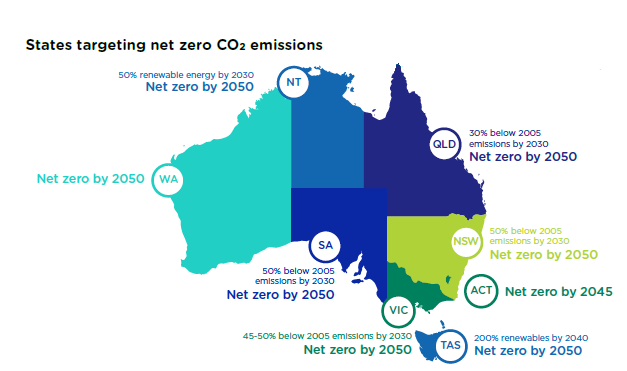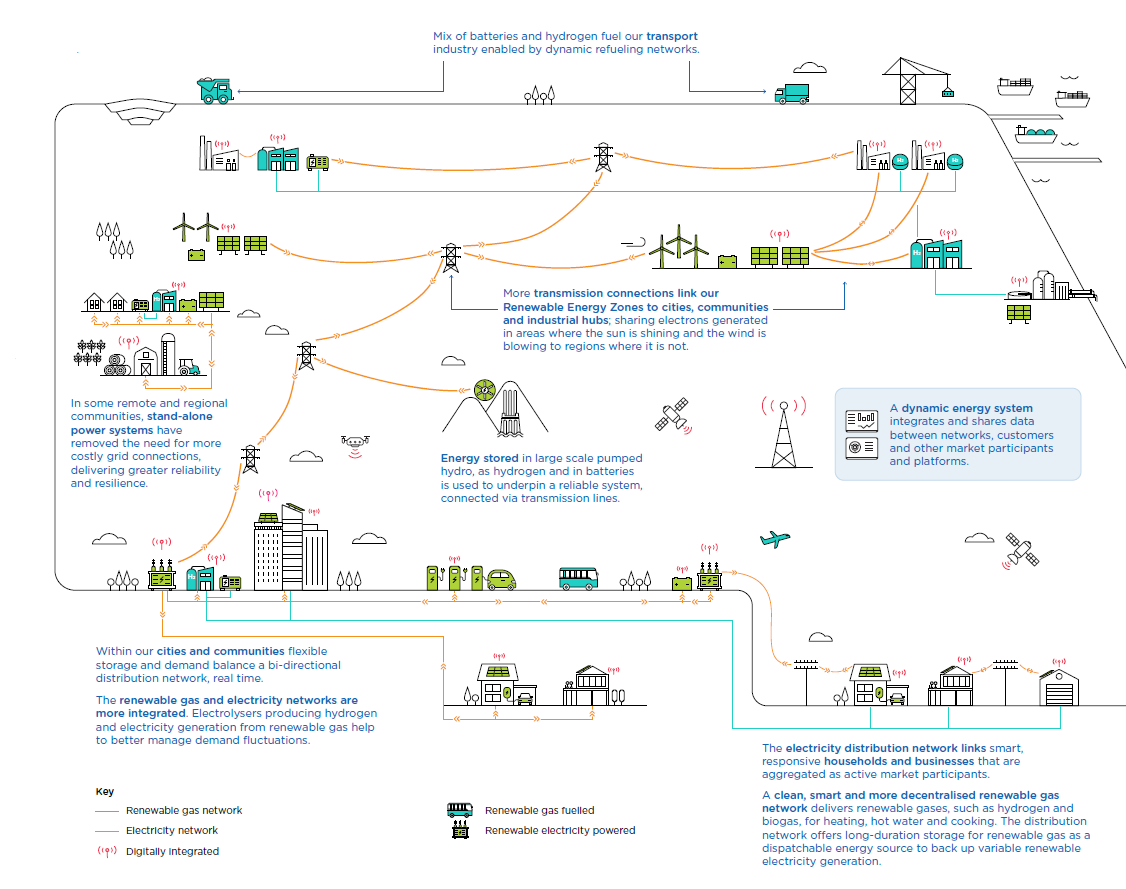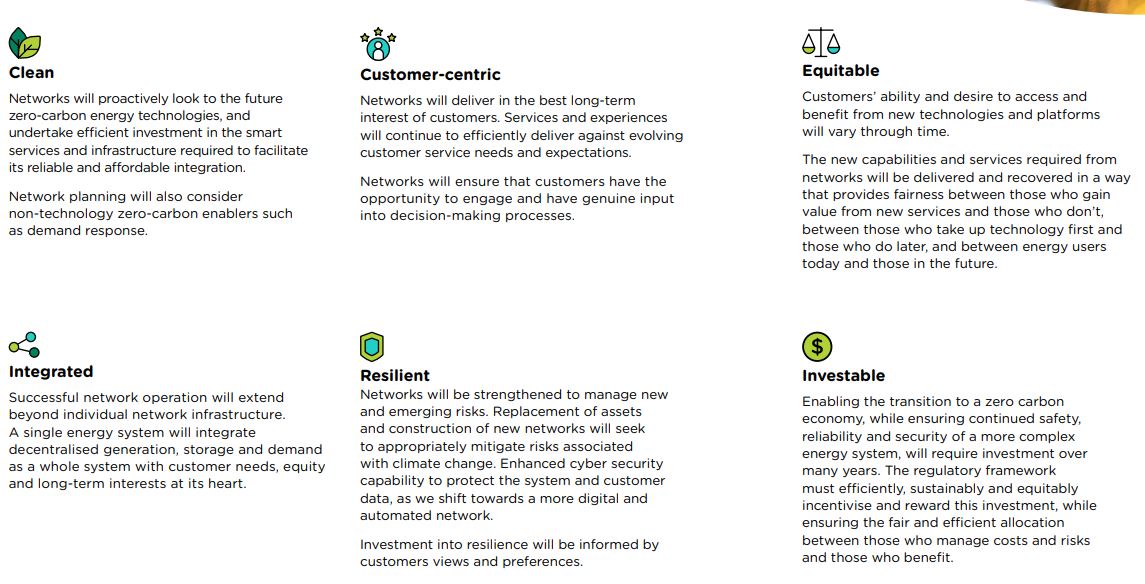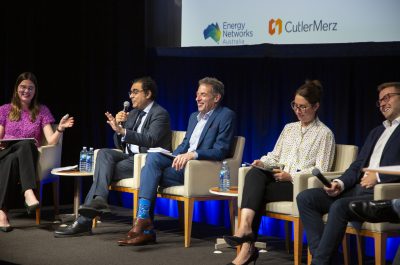Energy Vision: Networks delivering net zero
As Australia’s power and gas grids become smarter, more integrated, and more efficient they play a most critical role in delivering the clean energy transition. Without these platforms working together, our economy cannot decarbonise.
All network types – transmission, distribution and gas – are transforming to accommodate a clean energy future, but until now there has been nothing that describes how.
Energy Networks Australia (ENA) has worked with networks, consumer groups and energy market bodies to develop a vision that describes how the three network types can work together and with customers to forge a collective pathway to net zero.
Energy Networks Australia’s Energy Vision: Networks delivering net zero serves as an agreed statement of the future roles of energy networks in the transition, enabling greater customer choice and flexibility, while supporting system security and reliability at lowest possible cost.
Networks delivering a net zero energy system
Governments, investors and consumers across Australia and globally are driving a target of net zero by 2050. The energy sector will need to move earlier than most, accelerating pathways for other sectors to decarbonise.
Networks are committed to delivering, as a minimum, the targets as mandated by law and demanded by their customers, shareholders and stakeholders. Doing so efficiently and in a way which delivers the greatest value to all customers will be critical.
This transformation must be delivered affordably, while maintaining system security and reliability.
Electricity and renewable gas networks will play a foundational role. Smarter, more dynamic networks will connect new sources of production, storage and consumption distributed across our regions, industries, cities and households.
In doing so, networks will underpin new possibilities; the uptake of clean and digital technology, the delivery of new energy services, and the equitable sharing of benefits across all.
Some pathways to net zero are still emerging. This will evolve through time as technology costs, consumer preferences and policy positions become clearer.
This means that retaining flexibility and optionality in the technology choices networks make is important to not prematurely constrain opportunity and unnecessarily bake in higher cost options. This will allow networks to act proactively towards net zero emissions, while the decarbonisation pathways become more certain.
This aligns with networks’ responsibility to transition to net zero emissions, while ensuring the transition is orderly and consumers’ interests are protected.
Energy Vision
Energy networks will work together to deliver an affordable, secure, reliable and equitable net zero emissions energy system for the benefit of customers and community.
To do this, electricity and gas networks will be far smarter and more integrated than today. Customers and their different energy uses will be at the centre of networks’ activities.
Uses of energy networks in a net zero economy
While some of the pathways to net zero are still emerging, in all scenarios networks play a crucial role in enabling possibilities and facilitating the transition.
There are many changing use cases within the future energy system that are broadly understood. For example, enabling customer connections of distributed energy resources. However, some are yet to play out, such as the role of renewable gas in households.
What is clear is that to decarbonise affordably and reliably, our existing energy delivery systems will need to adapt to facilitate the evolving energy mix. Today, our networks transport gas and electricity. In the future, it is likely a mix of renewable gas and renewable electricity will support peak summer and winter demand, as well as storage requirements.
The vison looks at all segments of our community and economy and highlights future energy uses in households and businesses, transport, urban development, industrial and commercial infrastructure, import and export opportunities and energy generation.
Principles of the zero-carbon energy system
Delivering a net zero future will require changes to how networks operate. The core values of safe, secure, reliable, and affordable energy will remain at the heart of networks’ role. As their services evolve, they will also be guided by the following principles of clean, customer-centric, equitable, integrated, resilient, investable.
Australia must transform the way energy is produced, stored, shared and consumed. Delivering this transformation will require innovation, new technologies, additional infrastructure, and policy and regulatory reform.
Timely investment in networks, especially new transmission, will underpin these possibilities. All Australian governments have committed to achieving net zero targets but we need whole-of-system thinking to ensure those targets are met in a way that delivers the greatest value to all customers.





